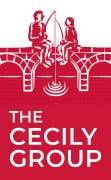
Fans of HBO’s Succession might still be wondering if there was a way the Roy siblings’ power struggles could have been resolved in fewer than four seasons. While we don’t claim to have all the answers, there are proven strategies that have been working for some families for centuries. Had the Roys had our help, we’d have done our best to turn it into the most uneventful — and shortest — show on HBO. Family business succession often involves balancing numerous priorities, like tradition, family dynamics, and professional management. Many fail to maintain continuity due to a lack of structured planning. Some families have mastered this transition through strategic planning and strong governance. One such success story is the Wallenberg family, whose multi-generational business empire in Sweden exemplifies successful family business succession. This article explores the Wallenberg family’s approach to highlight best practices other family businesses can learn from.
The Wallenberg Family Legacy
The Wallenberg family’s business journey began in the mid-19th century and has evolved through six generations, making it one of Europe’s most enduring family empires. In 2002, Professor Håkan Lindgren from the Stockholm School of Economics published a study titled Succession Strategies in a Large Family Business Group: the Case of the Swedish Wallenberg Family to analyse their long-term business viability. He wrote: “This case clearly shows the importance of consolidated group norms and attitudes – a corporate culture – in explaining the outcomes of succession planning.” He also found that separating financial power from direct ownership, clear succession strategies, and emphasis on governance have also been keys to their success.
1. Long-Term Planning and Structured Succession
The Wallenbergs understood the importance of preparing the next generation long before succession became necessary. Early planning included structured education and mentorship, often involving international exposure to broaden perspectives. As Lindgren notes, “With these goals in mind, a stint of education abroad was considered vital for the teenage children of both sexes. After all, only foreign experience could make them appreciate Sweden.”
- Educational Preparation: The Wallenberg family placed a strong emphasis on education, often sending younger members abroad to gain international perspectives. This not only broadened their horizons but also prepared them for leadership roles back home.
- Mentorship and Early Involvement: From a young age, potential successors were involved in the family business, often in supportive roles, to learn the ropes under the guidance of experienced leaders. For instance, Jacob Wallenberg was mentored by non-family leader Joseph Nachmanson before stepping into his leadership role.
- Formalised Succession Strategy: The family had a clear preference for passing leadership down the male line, specifically to the first-born son, but also considered competence and preparedness, allowing brothers or cousins to share leadership when necessary.
By planning succession well in advance, the Wallenberg family ensured that each new leader was not only prepared academically but also experienced in practical business operations. This proactive approach reduced disruptions and maintained business continuity when leadership changed hands. Early mentorship helped young successors develop critical decision-making skills and gain a sense of responsibility.
2. Separating Ownership from Management
The Wallenberg businesses maintained a professional approach that mitigated family conflicts over day-to-day decisions. As Lindgren explains: “The Wallenbergs separated the money from the power, which has been a key to avoiding internal family conflicts.” Separating ownership from management allowed the family to focus on strategic direction and ensured that leadership changes did not disrupt the operational efficiency of the companies.
- Formation of Investment Holding Companies: Companies like Investor and Providentia acted as holding entities, allowing the Wallenberg family to maintain control over key assets while delegating daily operations to professional managers.
- Clear Roles for Family Members: Family members were trained and educated to hold strategic roles rather than directly managing daily business operations. This kept the focus on long-term ownership rather than micromanagement.
- Letting Actions Speak: The Wallenbergs are known for maintaining a low public profile and avoiding ostentatious displays of wealth. Their family motto, “Esse, non videri” — “To be, rather than to seem” — captures this approach perfectly. Quiet, authentic leadership reinforces a culture of service over status and substance over image.
- Maintaining Family Governance: The Wallenberg family structured governance to separate strategic decisions (handled by family members) from operational decisions (handled by professional managers).
By keeping management professionalised, the Wallenberg businesses sustained operational efficiency and could attract skilled non-family executives.
3. Professionalisation of Leadership
Bringing in external expertise while preserving family influence has been crucial for the Wallenbergs. Notably, during key transitions, reliable non-family leaders bridged generational gaps. As Lindgren noted: “The recruitment of reliable outsiders exceptionally has been used to provide a bridge from one generation to the next.” As mentioned, Joseph Nachmanson mentored the young Jacob Wallenberg and helped navigate leadership transition challenges.
- Hiring Reliable Non-Family Managers: During transitional phases, the Wallenbergs often appointed trusted non-family leaders, such as Joseph Nachmanson, who guided the business through economic challenges while mentoring the next family leader.
- Balanced Power Structures: Non-family leaders held significant roles but were closely aligned with the family’s strategic vision, to create cohesion while bringing professional expertise.
- Leadership by Merit: Even within the family, leadership was assigned based on competence rather than just birthright. For example, when Marcus Wallenberg was deemed not ready, a non-family leader temporarily filled the role.
Professionalisation helped bridge gaps during generational transitions, kept business operations stable, and ensured that strategic decisions were made with the necessary expertise.
This practice safeguarded the business from inexperienced leadership while allowing family members to grow into their roles without the pressure of immediate succession.
4. Governance Structures and Adaptation
The Wallenberg family uses structured governance systems that successfully prevent conflicts and maintain clarity and order. As the group evolved, their governance structures allowed for active ownership in a select number of large firms, rather than spreading investments too thin. Lindgren writes: “From being a traditional investment company with a highly diversified portfolio, Investor evolved into a holding company with controlling positions that allowed it to exercise active ownership in a limited number of large firms.”
- Use of Holding Companies: Investor AB and other entities enabled the Wallenbergs to manage vast business interests through structured investment strategies.
- Active Ownership with Structured Control: Rather than holding minority stakes across many ventures, they focused on maintaining controlling stakes in key companies, like SEB and Ericsson.
- Adaptive Governance Models: The family evolved from purely financial investments to also holding industrial companies, reflecting their adaptability to changing economic landscapes.
The Wallenbergs maintained strategic control without being overwhelmed by day-to-day management by creating the right governance structures. The focus on a few key businesses rather than a widely spread portfolio helped maintain influence.
5. Balancing Tradition with Modernisation
The Wallenberg approach balances tradition with innovation. While maintaining core values, they have strategically invested in new areas to ensure long-term relevance. By keeping the business rooted in traditional values while exploring new opportunities, the Wallenbergs have maintained both stability and growth.
- Investing in New Sectors: While rooted in traditional banking and industrial sectors, the Wallenbergs gradually diversified into new areas like healthcare and technology, keeping the portfolio relevant.
- Respect for Legacy while Encouraging Innovation: Successors were encouraged to introduce new business strategies as long as they aligned with the core values of stability and long-term growth.
- Long-Term Investment Philosophy: Instead of focusing on short-term gains, the Wallenbergs prioritised sustainable investments that could stand the test of time.
This balanced approach kept the business aligned with evolving markets without sacrificing the family’s core values. It allowed the family to remain significant players in the Swedish economy while adapting to new opportunities. The commitment to both tradition and innovation enabled the business to navigate economic shifts while preserving the legacy built over generations.
6. Cohesion and Family Culture
Instilling core values early and promoting a sense of duty have been crucial in maintaining unity and stability within the Wallenberg family business.
- Instilling Core Values Early: From childhood, family members were taught the importance of hard work, integrity, and loyalty to the family enterprise.
- Promoting a Sense of Duty: Successors were not just inheritors but custodians of a legacy, responsible for maintaining and growing what previous generations had built.
- Shared Leadership: In some generations, cousins or siblings shared leadership roles, which helped mitigate the risks associated with single-point leadership.
The strong sense of duty and pride in the family’s achievements created unity, even during challenging transitions. Cohesion and a shared vision reduced internal disputes and helped maintain consistent leadership across generations.
Key Takeaways for Family Businesses
- Plan Early and Involve the Next Generation: Start grooming successors well before they take on leadership roles.
- Separate Management from Ownership: Professionalise daily operations while keeping strategic control within the family.
- Utilise External Expertise When Needed: Bringing in non-family leaders during transitions can stabilise the business and prepare family members for future roles.
- Build Structured Governance: Clearly defined roles and investment strategies maintain stability even as leadership changes.
- Adapt Without Losing Core Values: Maintain the balance between modernisation and tradition to stay relevant while preserving the legacy.
- Create Family Cohesion: Cultivate a strong sense of duty and shared vision to maintain unity through transitions.
By integrating these practices, the Wallenberg family preserved their legacy and successfully adapted to changing economic conditions, making them a model for successful multi-generational business transitions.
The Wallenberg case highlights the importance of clear succession strategies, balancing tradition with modernity, involving external expertise, and maintaining structured governance. These practices have helped them maintain their legacy through generations. For families aiming to preserve both business and legacy, adopting a proactive, structured approach like the Wallenbergs can make all the difference.
Sources:
Lindgren, H. (2002). Succession strategies in a large family business group: The case of the Swedish Wallenberg family. Proceedings of the 6th European Business History Association Annual Congress, Helsinki, August 22-24. Stockholm School of Economics. Available at: https://www.researchgate.net/publication/228465445 [Accessed 8 April 2025].
Strom, Stephanie (1996). In Sweden, a Shy Dynasty Steps Out. The New York Times. Available at: https://www.nytimes.com/1996/05/12/business/in-sweden-a-shy-dynasty-steps-out.html
